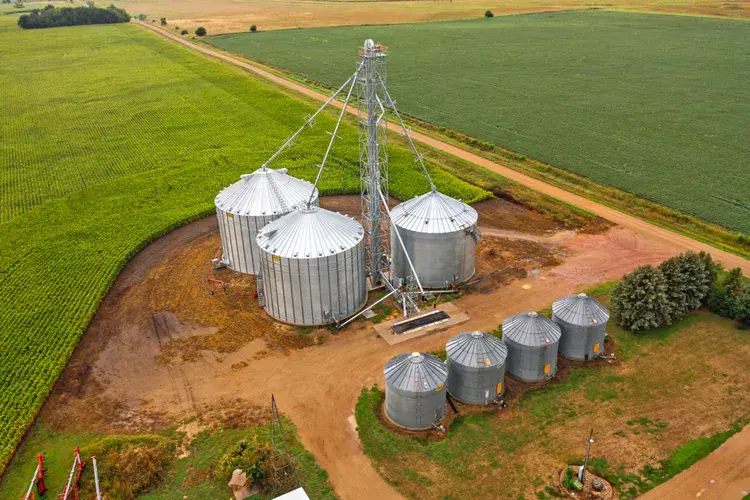A fertilizer industry expert says there could be further disruptions in the supply chain from...
Speedy U.S. Corn and Soy Harvests Strain Farmers, Storage Capacity

U.S. farmers are harvesting two of the largest corn and soybean crops in history at the fastest pace in years, straining their physical capabilities and their grain storage capacity.
The massive influx of crops is testing growers who are already grappling with grain prices near four-year lows, stiff competition for global export sales and farm incomes that are down from a record high just two years ago.
Many Midwestern farmers still have grain left in storage from 2023, after they refused to sell a record corn crop due to low prices. Now, dry weather is accelerating this year’s harvests and forcing grain handlers in some areas to store corn outside, rather than in storage bins.
“It has been fast and furious,” Brent Johnson, a corn and soybean farmer in Ashland, Illinois, said of harvesting.
Weeks of warm and dry weather across the Corn Belt this autumn sped up crop maturity and enabled combines to keep rolling.
Jeff O’Connor, who grows corn and soybeans near Kankakee, Illinois, said his employees only had a couple of half-days off to rest in the past month due to rapid harvesting. “My people and equipment would like a break,” he said.
As soy harvesting winds down, farmers are moving on to corn, which typically yields more than three times as much grain per acre than soybeans. At some Midwest elevators, the flow of corn from the fields has been filling up storage, causing long lines of trucks waiting to dump their loads.
In Shell Rock, Iowa, ethanol producer POET is storing corn on the ground, local farmer Caleb Hamer said, adding that he dumped some of his harvest on a pile that looked like it held 1.5 million bushels.
“We are harvesting a crop too fast for our storage infrastructure. That’s the biggest thing,” said Chad Henderson, founder of Wisconsin-based Prime Agricultural Consultants.
Quick harvesting and localized storage squeezes are forcing farmers to consider selling some crops for less than it cost to produce them. Yet corn futures prices are signaling they should hold the grain for a few months, if possible.
On the Chicago Board of Trade, benchmark December corn futures were trading at a roughly 22-cent discount to the May 2025 contract. That means farmers could earn 22 cents a bushel by selling their corn for deferred delivery in May.
Still, growers should not store their harvest without booking any sales and risk a deeper market downturn, according to CoBank economist Tanner Ehmke.
Chris Gibbs, who grows corn and soybeans in Ohio, said he has not made any advance deals to sell his autumn harvests for the first time in 48 years of farming. “My marketing plan is to keep my head down and wait for an opportunity to come along, which is a very poor plan,” Gibbs said.
EDITOR’S TAKE:
Obviously, the rapidly progressing harvest is both a blessing and a curse type scenario. On the one hand, the crop is mature and the combines can keep rolling. On the other hand, with such a bountiful harvest, there simply is not enough storage, either on or off farm. Add to that, the problems with low water levels on the Mississippi River slowing shipments and slower transportation in and out of Mexico further exacerbate the situation. Farmers will need to hedge some of their grain if possible. It is a tricky year for them for developing a solid marketing plan. One way you might help is to emphasize AgPack® with up to $40,000 in exclusive rebates and discounts on products many farmers use. If you’re not familiar with what AgPack offers these days, no problem. Simply go to the app store and download the Certified Ag Dealer mobile app. It will provide you with the details and much more information about the CAD program.








